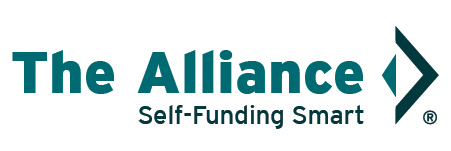4 Healthcare Trends Hurting Employers Heading Into 2022
By: Melina Kambitsi, Ph.D., SVP of Business Development & Strategic Marketing Price transparency has been one of healthcare’s hottest trends, and we’ve kept close watch. However, as 2022 begins, employers should keep their eye on a few other trends as we head into the new year.
Price transparency has been one of healthcare’s hottest trends, and we’ve kept close watch. However, as 2022 begins, employers should keep their eye on a few other trends as we head into the new year.
Spending is Going Up (And Has Been Since 1970)
Hospital prices have increased at a higher rate than the consumer price index, wages, and inflation. Over the past 40 years, the individual cost of healthcare has increased from $1,848 to $11,582 in 2019 dollars.
Ever-increasing costs are especially bad for employers because they bear the brunt of them. Employers paid 83% of their employees’ costs for single-coverage care in 2020, or $10,340 per covered employee.
Slowing the trend: Pushing price transparency standards onto health systems is a good start, and perhaps the recently increased penalty for non-compliance will improve hospital participation.
Without publicly available data on price, the healthcare marketplace cannot function properly. If prices were accessible, consumers could shop more effectively.
Mergers Are Rising (And So Too Are Hospital’s Prices)
In 2007, roughly half of all community hospitals belonged to a health system. A decade later, that number rose to two-thirds.
As we’ve previously written, hospital consolidation is not inherently bad; even if mergers don’t improve quality, they can reduce operating costs for the acquired hospitals by as much as 30%.
Those savings, however, have not translated into lower costs for consumers. In fact, after merging, hospital prices typically increase by 6-18%.
Slowing the trend: According to One Percent Steps, just a 10% reduction in hospital market concentration could lower hospital prices by $25 billion annually.
As Healthcare Costs Rise, Quality Lags
Health systems and hospitals have explained rising costs as a means to improve quality, (which has been effectively debunked,) while other arguments include:
- Low Medicare reimbursement
- Patient mix differences
- State-level funding variances
First, despite charging commercial payers 247% more than Medicare, there’s no evidence hospitals need higher prices to make up for “uncompensated care.”
Additionally, RAND Corporation found no correlation between hospital prices and public health funding. (In other words, states with more public funding don’t necessarily charge lower prices.) That same study concluded that patient mix differences do not explain price variations.
Slowing the trend: We must encourage providers to move away from the traditional fee-for-service payment model. Payment reform that supports value-based reimbursement shifts some financial risk back onto providers and encourages health systems to improve their standards of care and compete for customers using quality metrics.
For example, Reference-Based Contracting by The Alliance® pays providers based on a percentage of Medicare, which establishes a baseline employers need to pay fairer prices.
Non-Profits Are Providing Less Charity Care & Suing More Patients
Non-profit community hospitals make up 92% of Wisconsin hospitals and are required to provide charity care in return for tax exemptions – which equal $30 billion annually.
Despite that financial reprieve, some hospitals claim they must charge payers more due to charity care. However, non-profit hospitals spent just 2.3% of their facility expenses on charity care. That’s lower than government hospitals (4.1%) and for-profit hospitals (3.8%). In fact, seven of the top 10 most profitable hospitals are non-profits.
Even more disheartening, hospitals are increasingly suing patients over unpaid bills. In Wisconsin, there was a 37% increase in hospital lawsuits from 2001 to 2018.
By using lawsuits to collect medical debt, hospitals discourage low-income employees from utilizing healthcare resources.
Slowing the trend: Publicly ranking hospitals based on the amount of charity care provided, enforcing a minimum requirement for charity care, or loosening restrictions on who qualifies for charity care, would all discourage hospitals from these practices.
A Better Healthcare Trend
Despite these trends, The Alliance has a more positive outlook for the future; when employers band together to move healthcare forward, we’re a powerful force.
Want an alternative to traditional health plans? Contact our Business Development team to find out how data analysis is the beginning of your next upward trend.
About the author:
Melina joined The Alliance in 2017 and leads the teams responsible for business development, client development, and strategic marketing.
